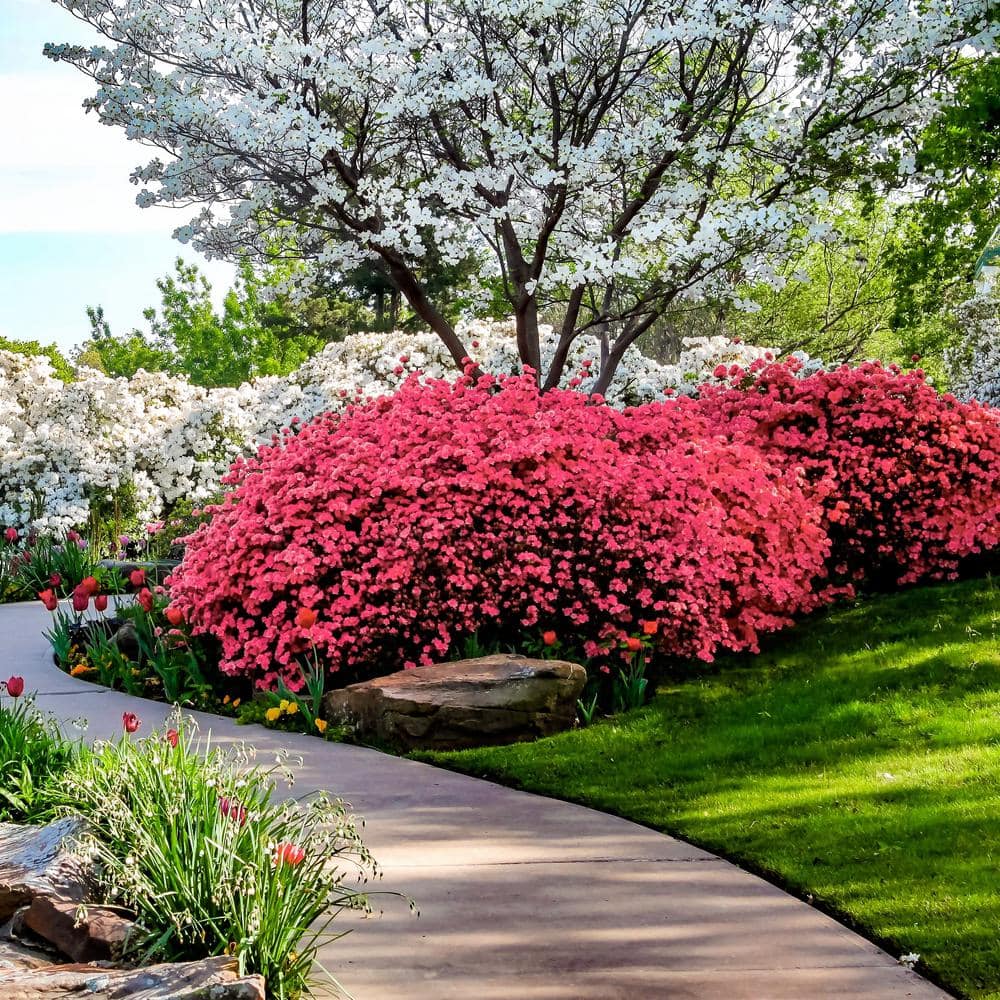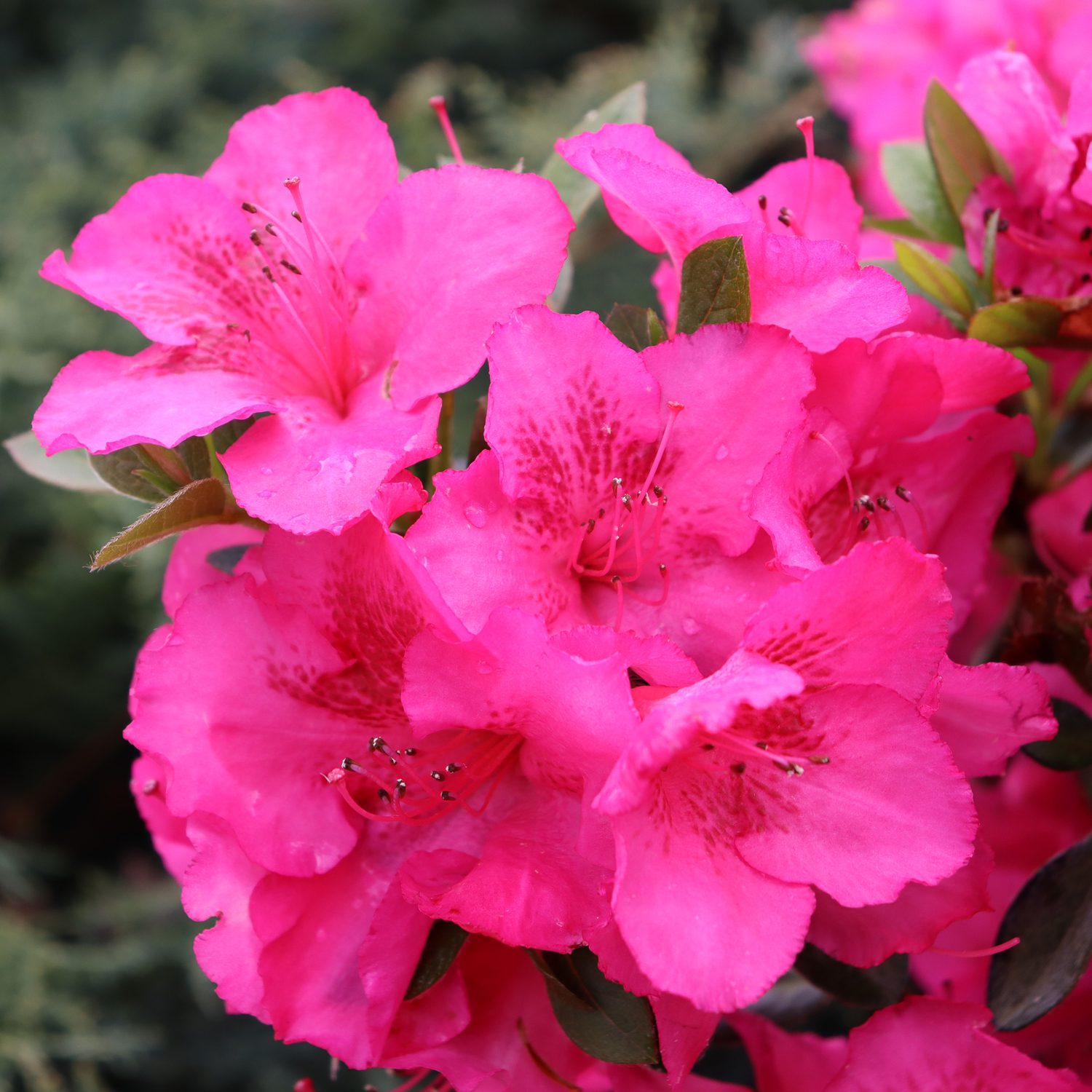All About Azaleas: More Than Just Pretty Flowers
Ever walked by a bush absolutely covered in vibrant blooms in the spring? Chances are, you were looking at an Azalea. These plants are real showstoppers, bringing a burst of color to gardens and landscapes everywhere. But there’s more to these beauties than just their good looks. Let’s dig into what makes Azaleas so special.
What Exactly IS an Azalea Anyway?
You might hear the terms “Azalea” and “Rhododendron” thrown around, and you might wonder if they’re the same thing. Well, botanically speaking, all Azaleas are Rhododendrons, but not all Rhododendrons are Azaleas. Think of it like squares and rectangles. Azaleas are a specific group within the larger Rhododendron genus.

So, what sets Azaleas apart? Generally, they tend to have smaller leaves and flowers compared to many other Rhododendrons. Azalea flowers often have five stamens (the pollen-producing parts), while Rhododendrons usually have ten or more. Also, most Azaleas are deciduous, meaning they lose their leaves in the fall, while many Rhododendrons are evergreen and keep their foliage year-round. However, there are evergreen Azaleas too, so it can get a little confusing!
A Rainbow of Colors and Shapes
One of the biggest draws of Azaleas is the sheer variety they come in. You can find them in almost every shade imaginable – from delicate pastels like pink, lavender, and white to bold and fiery reds, oranges, and purples. The flower shapes themselves are diverse too. Some are single and open-faced, while others are double with layers of petals, creating a fuller, more ruffled look. You’ll even find some with frilly or wavy petal edges.
The size and shape of the Azalea bush itself can vary quite a bit as well. Some are low-growing and spreading, perfect for ground cover or the front of a border. Others can grow quite tall and upright, making them excellent for hedges or as standalone specimens. This wide range of sizes and forms means there’s an Azalea out there to fit just about any garden design.

Where Do Azaleas Come From?
Azaleas have a pretty widespread natural distribution. You can find them native to several parts of the world, including North America, Europe, and Asia. The species we often see in our gardens today are mostly hybrids, developed from these native plants to enhance their flower color, size, and hardiness.
In North America, you’ll find native Azaleas scattered across the eastern part of the continent, from the pine barrens of New Jersey down to the woodlands of Florida and west to Texas. These native Azaleas are often prized for their delicate beauty and their ability to thrive in specific local conditions.
Why Gardeners Love Azaleas
There are plenty of reasons why Azaleas are such popular garden plants:
# Stunning Spring Blooms
Let’s face it, the main reason people fall in love with Azaleas is their incredible spring floral display. When in full bloom, a mature Azalea bush can be absolutely breathtaking, practically covered in a mass of colorful flowers. This explosion of color can really liven up a garden after the dullness of winter.
# Relatively Easy to Grow
Compared to some other flowering shrubs, Azaleas are generally considered to be relatively easy to grow, as long as you provide them with the right conditions. They aren’t overly fussy and can thrive for many years with proper care.
# Versatility in Landscaping
As mentioned earlier, the wide variety of sizes, shapes, and colors makes Azaleas incredibly versatile in landscaping. They can be used in foundation plantings, borders, woodland gardens, containers, and even as informal hedges.
# Attracting Pollinators
The vibrant flowers of Azaleas are also attractive to pollinators like bees and butterflies, adding life and ecological value to your garden.
Giving Your Azaleas the TLC They Need
To keep your Azaleas happy and blooming beautifully, here are a few key things to keep in mind:
# Light Requirements
Most Azaleas prefer partial shade, especially in hotter climates. They appreciate morning sun and afternoon shade. Too much intense, direct sunlight can scorch their leaves and fade their flowers. However, some varieties can tolerate more sun, especially in cooler regions.
# Soil Matters
Azaleas are acid-loving plants, meaning they thrive in soil with a lower pH (between 4.5 and 6.0). Well-drained soil is also crucial. They don’t like to sit in soggy conditions, which can lead to root rot. If your soil is heavy clay, amending it with organic matter like peat moss or compost can improve drainage and lower the pH.
# Watering Wisely
Consistent moisture is important, especially during dry periods and when the plants are blooming. However, avoid overwatering. The soil should be kept evenly moist but not waterlogged. A layer of mulch around the base of the plant can help to retain moisture and keep the roots cool.
# Feeding Your Azaleas
Azaleas generally don’t need heavy fertilization. However, a light application of an acid-forming fertilizer specifically formulated for Azaleas and Rhododendrons in the spring after they finish blooming can be beneficial. Avoid fertilizing too late in the season, as this can encourage new growth that might be susceptible to winter damage.
# Pruning for Shape and Health
Pruning isn’t usually necessary for Azaleas, but you can prune them lightly after they finish flowering to maintain their shape or remove any dead or damaged branches. Avoid heavy pruning, as this can reduce flowering for the following year.
# Dealing with Pests and Diseases
While generally hardy, Azaleas can occasionally be bothered by pests like lace bugs, spider mites, and aphids. Keep an eye out for any signs of infestation and treat accordingly with insecticidal soap or other appropriate methods. Fungal diseases can also occur, especially in humid conditions. Good air circulation and proper watering can help prevent these issues.
The Joy of Azaleas
Growing Azaleas can bring years of beauty and enjoyment to your garden. Their stunning spring blooms are a welcome sight, and their relatively easy care makes them a rewarding addition to any landscape. With a little attention to their basic needs, you can have these vibrant shrubs thriving and adding a splash of color to your outdoor space for many seasons to come.
Conclusion
Azaleas are more than just pretty faces in the garden. They represent a diverse group of flowering shrubs with a rich history and a wide array of colors and forms. Their relative ease of care and their ability to bring a spectacular burst of spring color make them a favorite among gardeners. Understanding their basic needs, from their preference for acidic soil and partial shade to their watering requirements, will ensure these beauties thrive and continue to delight for years to come. Whether you’re looking to create a vibrant spring display or add elegant structure to your landscape, Azaleas offer a wealth of possibilities.
Frequently Asked Questions About Azaleas
Are Azaleas poisonous to pets?
Generally, yes, Azaleas are considered toxic to pets like dogs and cats if ingested. They contain grayanotoxins, which can cause symptoms such as vomiting, diarrhea, weakness, and even more severe issues. It’s best to keep pets away from Azaleas or choose non-toxic alternatives if you have curious animals.
How long do Azaleas bloom?
The bloom time for Azaleas can vary depending on the variety and your local climate. However, most Azaleas typically bloom for several weeks in the spring, usually from early to late spring. Some reblooming varieties are also available that may produce a second, smaller flush of flowers later in the season.
Can I grow Azaleas in containers?
Yes, many Azaleas can be successfully grown in containers. Choose a pot that is large enough to accommodate the root system and has good drainage. Use an acidic potting mix and ensure the container receives appropriate light and water. Container-grown Azaleas may need more frequent watering than those planted in the ground.
What’s the best time of year to plant Azaleas?
The best time to plant Azaleas is typically in the spring or fall when the weather is mild and the soil is moist. This gives the roots time to establish before the stresses of hot summer temperatures or cold winter conditions. Avoid planting during the heat of summer or when the ground is frozen.
Why isn’t my Azalea blooming?
Azalea Plant
